
All categories
Featured selections
Trade Assurance
Buyer Central
Help Center
Get the app
Become a supplier

(1030 products available)


















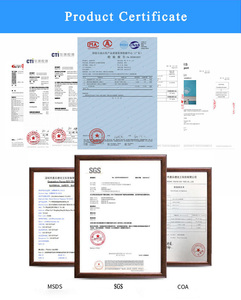


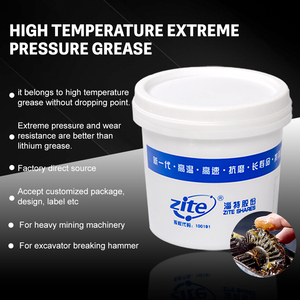





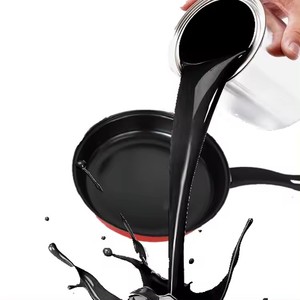
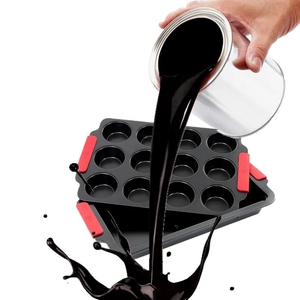
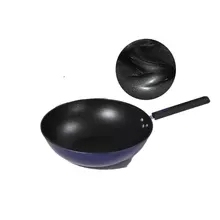


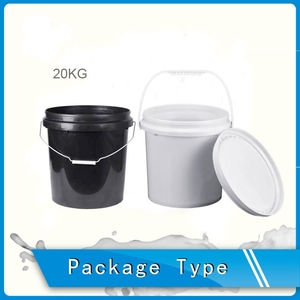













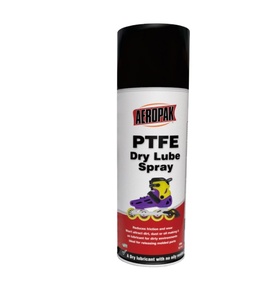



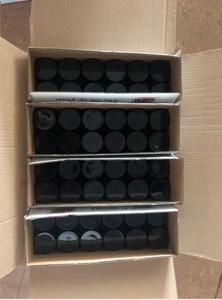

PTFE spray lubricant is a type of lubricant that contains polytetrafluoroethylene (PTFE) as an additive. It is often known as Teflon. The PTFE additive improves the characteristics of the lubricant. It reduces friction between surfaces and protects them from wear and tear. It also prevents the accumulation of dirt and dust on the lubricated surfaces. PTFE spray lubricants are ideal for high-speed applications with minimal to no load.
PTFE spray lubricants come in different varieties. Here are some of them:
Dry PTFE Spray Lubricant
Dry PTFE lubricant forms a dry, thin film on the surface it is applied to. Because of this, it is ideal for applications where a wet or oily residue is undesirable. The lubricant reduces friction between surfaces and protects them from wear and tear. It also prevents the accumulation of dust and dirt on the lubricated surfaces. Dry PTFE spray lubricants are ideal for high-speed applications with minimal to no load.
Food-Grade PTFE Spray Lubricant
Food-grade PTFE spray lubricants are manufactured for use in food processing and preparation equipment. They meet the FDA's regulations for incidental food contact. Such lubricants are odorless, tasteless, and non-toxic. They help in minimizing friction, preventing corrosion, and reducing the build-up of deposits in equipment and machinery.
High-Temperature PTFE Spray Lubricant
High-Temperature PTFE spray lubricants can maintain their lubricating properties in extreme heat. They are ideal for applications such as automotive parts, industrial machinery, and other equipment that generates a lot of heat.
Marine PTFE Spray Lubricant
Marine PTFE spray lubricants are specially formulated for use in marine environments. These environments are characterized by extreme humidity and exposure to saltwater. The lubricant reduces friction and protects metal surfaces from corrosion caused by saltwater and other harsh elements.
Electrical Contact PTFE Spray Lubricant
Electrical contact PTFE spray lubricants are used to ensure smooth and reliable operation of electrical components. They reduce friction, prevent corrosion, and minimize the risk of signal degradation in electrical contacts. Using electrical contact PTFE lubricants improves the lifespan and performance of electrical components. This leads to improved reliability and efficiency of the entire system.
PTFE Coating Spray
PTFE coating spray is a specialized coating that forms a protective layer on various surfaces. This coating has excellent non-stick properties. It also provides a barrier against corrosion, chemicals, and abrasion. PTFE coating spray improves the durability and performance of coated surfaces. They also have low friction properties, which prevents the build-up of materials on equipment and machinery. PTFE coating sprays are ideal for applications in the food processing industry, chemical handling equipment, and other industrial environments.
There is a wide range of specifications for different PTFE lubricants. Here are a few common specifications for PTFE spray lubricants:
Viscosity
Viscosity refers to how thick a liquid is. PTFE spray lubricants have a low viscosity, meaning they are thin and easy to spread. This allows them to cover surfaces evenly without leaving behind a sticky residue.
Temperature Range
PTFE Spray lubricants have a wide temperature range, from -50 to 250 degrees Celsius. This means the lubricant will remain effective in extremely cold and hot conditions. This feature makes it suitable for various applications, such as in industries and household use.
Load Carrying Capacity
The load capacity refers to the amount of pressure the lubricant can withstand on a surface without breaking down. PTFE spray lubricants have a high load-carrying capacity, making them suitable for applications with heavy machinery and moving parts.
Water Resistance
PTFE spray lubricants have water-resistant properties. This prevents the lubricant from washing away when sprayed on surfaces. The water resistance feature also protects the lubricant from rust and corrosion.
Compatibility
PTFE spray lubricants are compatible with various materials, such as metals, plastics, and rubber. This makes it suitable for different applications. The lubricant will not react with the materials and cause damage.
Here are some maintenance requirements for PTFE lubricants
Regular Inspection
Regular inspection of the equipment is essential. This is to ensure that the PTFE lubricant is still effective. Look for signs of wear and tear on the moving parts. If there is equipment with high loads, the lubricant should be reapplied regularly.
Application Method
When applying the PTFE lubricant, hold the can 10 to 30 cm away from the surface. This is to ensure an even coating. Do not apply the lubricant on a surface that is about to be painted, as it will be difficult for the paint to stick.
Proper Storage
The PTFE spray should be stored in a cool, dry place away from direct sunlight and heat sources. This is to prevent the aerosol can from exploding and the quality of the lubricant from degrading.
Clean Surfaces
Before applying the lubricant, ensure the surface is clean. Dust, dirt, and old lubricants will prevent the PTFE spray from working effectively. Wipe the surface clean using a cloth.
Wholesalers need to consider several factors before choosing a PTFE spray lubricant for their stock. They include the following:
Application Suitability
Consider the intended use of the lubricant. Is it for automotive parts, industrial machinery, household items, or outdoor equipment? Different applications may require varying properties, such as temperature resistance or load-bearing capacity.
Compatibility
Ensure that the lubricant is compatible with the materials of the parts or equipment to be lubricated. For example, certain lubricants may not be suitable for use with plastics or elastomers, as they could cause degradation or swelling.
Load and Speed
Consider the operating conditions of the equipment. For high-load applications, a thicker lubricant with good film strength may be needed. Conversely, for high-speed machinery, a low-viscosity lubricant that does not break down at high speeds is essential.
Environmental Conditions
Take into account the environmental conditions where the equipment or parts will be used. If it is exposed to extreme temperatures, humidity, dust, or corrosive elements, choose a lubricant with properties that offer the right protection in such conditions.
Food Grade Lubricants
For applications in the food industry, select food-grade PTFE lubricants that meet safety standards. These lubricants are formulated to be safe in case of incidental contact with food products.
Regulatory Compliance
Ensure that the PTFE spray lubricant complies with relevant industry standards and regulations. This is important for sectors such as healthcare, pharmaceuticals, and food processing, where adherence to regulations is critical.
Ease of Application
Consider the ease of applying the lubricant. Aerosol sprays or lubricants with applicator tips can simplify the application process, especially in hard-to-reach areas.
Performance and Longevity
Look for lubricants with excellent performance characteristics, such as high load-bearing capacity, low friction coefficient, and resistance to wear and corrosion. Consider the lubricant's longevity and whether it requires frequent reapplication.
Brand Reputation and Reviews
Research and choose reputable brands known for producing high-quality PTFE lubricants. Read customer reviews and testimonials to gauge the experiences of other users regarding performance and reliability.
Odor and Toxicity
Consider the odor and toxicity of the lubricant. Some lubricants may have strong odors or contain harmful chemicals. Wholesalers can choose low-odor or environmentally friendly formulations with reduced toxicity.
Price and Value
Compare prices from different suppliers, but don't forget to consider the overall value. Sometimes, a higher-priced lubricant may offer superior performance and longevity, resulting in cost savings in the long run.
Applying PTFE spray lubricant is not a complicated task. Anyone can do it by following the right instructions. Here is how to do it:
Q1: Does PTFE spray evaporate?
A1: No, PTFE spray does not evaporate. It is designed to provide long-lasting lubrication and protection. Once applied, it forms a thin, lubricating film on surfaces that continues to reduce friction and wear over time. PTFE spray is stable and does not break down or evaporate like some other lubricants.
Q2: How often should PTFE spray be applied?
A2: The frequency of PTFE spray application depends on factors such as the specific application, operating conditions, and the type of equipment being used. In general, it is recommended to reapply the lubricant periodically or when there is a noticeable decrease in lubrication performance. Regularly inspect the lubricated surfaces and determine the appropriate timing based on visible signs or changes in friction.
Q3: Can PTFE spray be used on electrical components?
A3: Yes, PTFE spray can be used on electrical components. There are specific PTFE spray formulations that are safe for use on electrical parts. These sprays help reduce friction, prevent corrosion, and ensure smooth operation without compromising electrical conductivity. Always check the product label to confirm suitability for electrical components before use.
Q4: Is PTFE spray lubricant waterproof?
A4: PTFE spray lubricant has water-resistant properties, making it suitable for applications exposed to moisture or harsh environments. It helps protect surfaces from water damage, reduces corrosion risk, and ensures reliable performance. However, it is important to note that PTFE spray is not entirely waterproof. It may not create a complete barrier against water in all situations.
Q5: Can PTFE spray be used as a chain lubricant?
A5: Yes, PTFE spray is often used as a lubricant for chains, especially in applications such as bicycles, motorcycles, and industrial machinery. PTFE spray helps reduce friction, minimizes wear, and provides smooth operation for chains, sprockets, and other related components. This leads to increased efficiency and extended service life. Regular application of PTFE spray can maintain chain performance and lubrication.